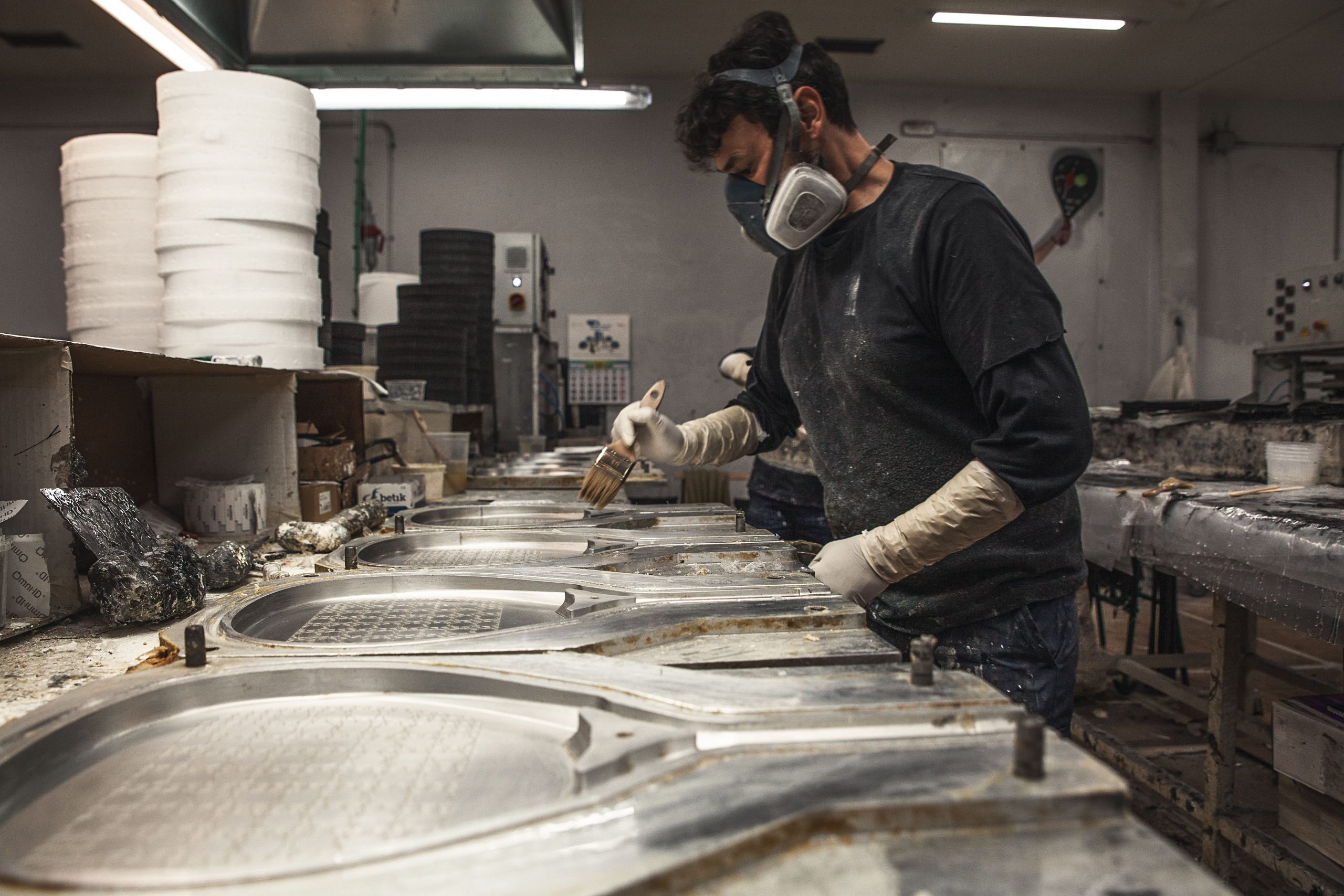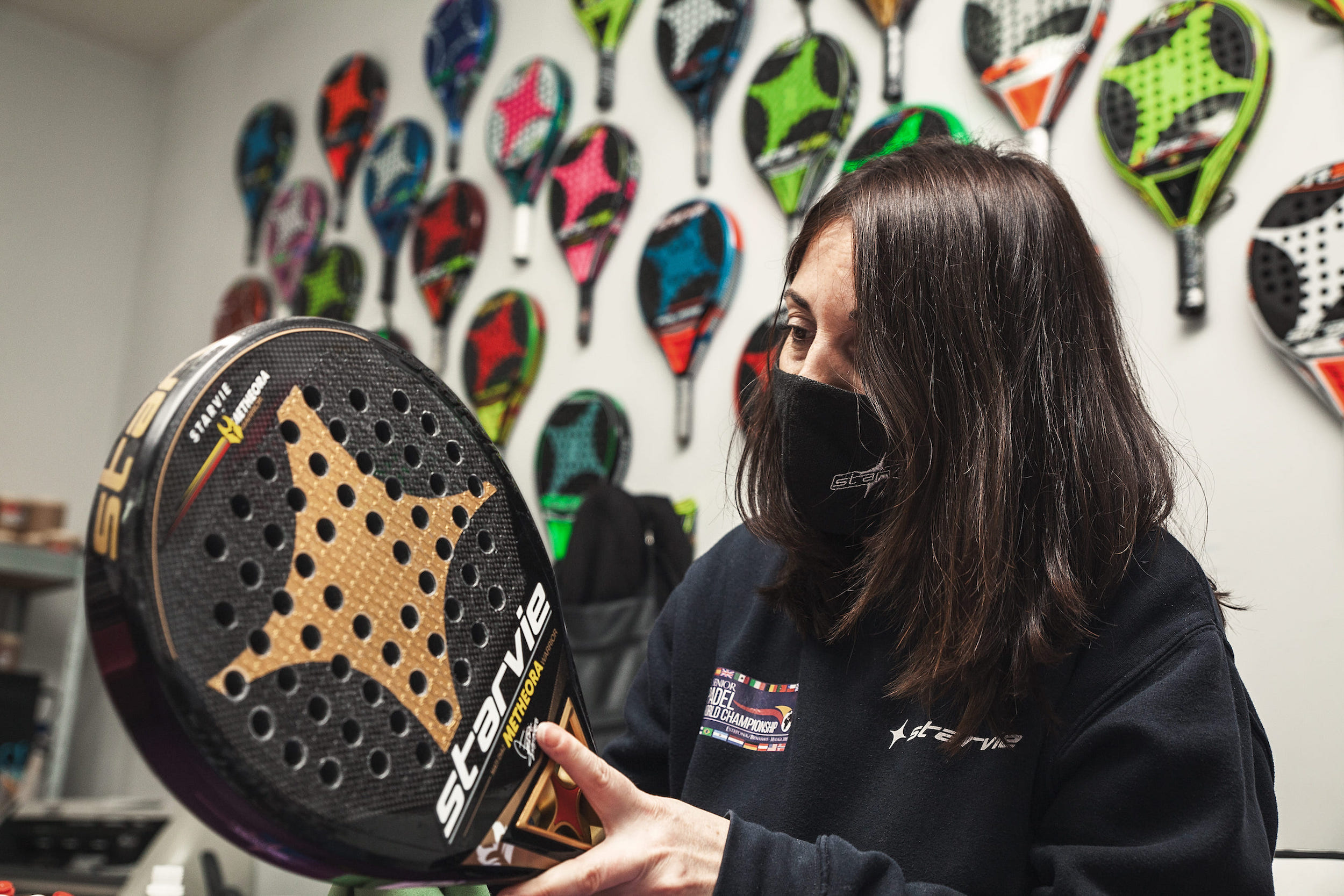Artesanal and 100% made in Spain. This is the manufacturing process of StarVie’s padel rackets.
It is an artesanal process and they are 100% made in Spain. The chronological manufacturing process for the padel rackets is divided into 12 stages that have been developed in the StarVie factory in Azuqueca de Henares (Guadalajara). There each StarVie padel racket is meticulously made day by day.
The StarVie factory was founded in 2013 with the clear objective to make the padel rackets from start to finish in Spain.
Artesanal Production from the Start
We are involved in the whole manufacturing process of the rackets. From the selection of the materials and moulds to the finish, to the attachment of the handle and cord. We make them using a careful, artesanal process with the exception of the tooling where a CNC machine is used.
This allows us to maintain the true essence of our product and to have absolute control over the production, keeping a strict eye on the production chain to spot and eliminate any errors in order to have the best possible end result. It is for this high level of attention to detail that the highest quality padel rackets are made under the stamp, Made In Spain.
What is more, in line with the requirements and policy of the company, all the materials used in the manufacture of the rackets come from suppliers who have the highest quality materials that comply with the technical specifications required.
Manufacturing process of StarVie rackets
The chronology of the manufacturing process of the StarVie padel racket:
DESIGN: In collaboration with the factory in Azuqueca de Henares, this process is developed in the central office of StarVie, in the centre of Madrid. They develop everything from the design of new moulds to the aesthetic finish of the rackets. An important point is the time spent on R&D. StarVie are continually looking for new materials and new mould shapes for their rackets in order to have the best aesthetics combined with the best aerodynamics and technical specifications.
DIE-CUTTING: (preparation of the materials) This is the first of the processes. The materials are received in spools or sheets, and they are cut into the shape of the mould for the required racket. The EVA rubber and the carbon fibre, aluminium, basalt and fibre-glass are configured in order to give, depending on the model, the different playing sensations.
MOULDING: In this phase, the previously cut materials are passed on to an area where they are impregnated with epoxy resin. Once impregnated they are placed in an aluminium mould and after a time setting under a controlled temperature, they are ready for the following process. The moulding process is the most important and it is here that the playability and quality of the racket is determined. In order to control the quality of the product, at random, a racket is taken after cutting to assess and test the quality of the moulding process.

DEBURRING: In this phase the cosmetic process starts. This technique takes away any left over material from the moulding process, it smoothes the racket.
WASHING: Each racket is washed by hand with soap and water and a scouring sponge before drying.
COVERING THE RACKETS: The rackets are covered with vinyls in order to be able to paint the rackets. Depending on the model the vinyls are added and removed until the process is finished.
PRIMING: This is done in a painting cabin where the first layer of primer is applied, for the subsequent puttying and paint.
MODIFICATION: This process covers up any defects, like tiny holes in the new mould.
PAINTING: Now starts the painting process, this is done in a painting cabin where paint and lacquer are applied. Each year different colours are chosen to align with the tastes and fashions of the consumers.
DECALS: We work with waterslide decals. The objective is to create models with designs that attract attention and are interesting and appealing to players.

TOOLING: This is the only automated process in the factory and it is done via a CNC (computer numerical control machine). Each racket has a different set of holes machined, depending on the model.
FINISH: The last link in the process before finishing the racket. In this phase the handle, grip, plug and cord are attached. Each part, once again, by hand. In the StarVie factory, depending on the model, it takes between 10 to 12 days to make a racket.
QUALITY CONTROL IN THE STARVIE FACTORY
Since 2017 we have held the quality control certificate for environmental management (ISO 14001:2015) and the system control certificate (ISO 9001:2015). In 2020 we renewed these for 3 more years, being the only padel factory holding these.


